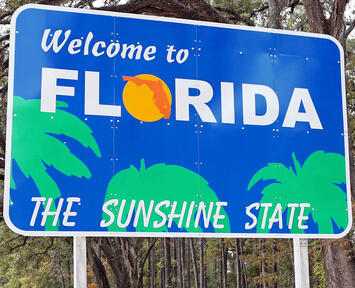
“California migration turned Colorado blue.” That sums up a common belief about how domestic (as well as international) migration plays out politically. It’s assumed that people moving out of big blue states like California, New York and Illinois turn out to be a political Trojan horse for their receiving Sun Belt red states. Eventually, as in Colorado, this migration would flip those states to blue.
But it hasn’t necessarily worked out that way.
A few years ago, Democrats were salivating over the prospect of turning Texas blue. That still might end up happening, but as of now, as the Daily Beast reports, Democrats “just hope to stop the bleeding.” California migrants to Texas are polling 57 percent conservative vs. only 27 percent liberal. In the 2018 Senate race between the Democrat Beto O’Rourke and the GOP incumbent Ted Cruz, Cruz won newcomers to Texas by a much larger margin than natives, 15 points for migrants vs. only three points for natives.
There was also a major and unexpected shift of Hispanic voters in the state toward the Republican party. Texas may someday turn blue, but migration from California has not produced the inevitable blue turn that some expected. Texas seems to have actually shifted in a redder direction recently. Cruz barely beat O’Rourke in 2018, 50.6 percent to 48.3 percent. But when O’Rourke ran for governor in 2022, Greg Abbott beat him by a solid 54.8 percent to 43.9 percent.
Similar shifts have happened in Florida. A swing state nationally, Florida has been Republican at the state level for some time. Still, Democrats historically had an edge in registered voters. But there was a huge shift toward Republicans during and in the wake of the pandemic, as the policies of Gov. Ron DeSantis proved very popular among national Republicans and made him a presidential contender. Long a major recipient of newcomers, Republicans passed Democrats in registered voters in Florida in December 2021 and had a 383,954 advantage by December 2022, which rose to 436,990 by this March.
Florida is one state where there was a huge red wave in the 2022 midterms. In the 2000s, Pew Stateline observed that Florida was a purple state trending bluer. They noted that Cubans were starting to trend Democratic, and that there was an influx of Puerto Ricans who had traditionally voted Democratic. Now Florida looks more like a red state.
Migration is also upending traditional Republican politics in entrenched red states such as Idaho and Montana. Migration has brought an influx of new conservative voters with a different profile and orientation. They are more highly educated, often have professional class jobs or significant financial assets, and are coming from blue states like California and Washington. Having lived under liberal hegemony, they are eager to support a conservative one in their new states, with a posture that’s aggressive and more explicitly anti-liberal.
Read the rest of this piece on Governing.com.
Aaron M. Renn is an opinion-leading urban analyst, consultant, speaker and writer on a mission to help America's cities and people thrive and find real success in the 21st century. He focuses on urban, economic development and infrastructure policy in the greater American Midwest. He also regularly contributes to and is cited by national and global media outlets, and his work has appeared in many publications, including the The Guardian, The New York Times and The Washington Post.
Photo via Flickr under CC 2.0 License.












